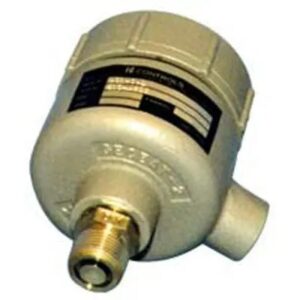Water conducts electricity due to ions. When it comes into contact with various chemicals, such as sodium and magnesium, or certain elements like calcium and chloride, water becomes more conductive. Further, the higher the temperature of a body of water gets, so does its ability to conduct electrical currents. This is all thanks to unique properties that are inherent in H2O molecules. And thus, to measure the conductivity of a body of water, you’ll need to invest in conductivity sensors.

Why Do We Need a Water Conductivity Sensor?
Scientists and researchers who work in industries like pharmaceuticals, semiconductors, or solar panels (just to name a few), are all vigilant in looking at water purity. In fact, they need to know the conductivity of the water so as not to get an inaccurate result in their testing.
But many other industries use conductivity measurement sensors to get accurate results too.
Water conductivity is measured in the food and beverage industry to ensure high-quality products are manufactured efficiently. This reduces the risk of contamination or quality loss, which in turn keeps profits up.
Water conductivity is also important in aquaculture and aquariums. For example, freshwater fish may require different water conductivity levels than saltwater fish due to their environment. Aquarium owners can monitor the change in this level with conductivity sensors to ensure that they take proactive measures for a healthy ecosystem. Furthermore, it allows them to spot any potential equipment issues from early on before more severe damage occurs.
So, as you can see, water conductivity and a water conductivity sensor play an essential role across many industries.
How is Water Conductivity Measured?
There are many ways you can measure the conductivity of water, but using the various forms of analyzers, from handheld testers to inline testers, are the most common and most accurate ways to measure.
The 210-C from us it is the perfect water conductivity sensor for a new generation of industrial conductivity analyzers. It delivers maximum flexibility, reliability, and ease of use to meet your specific needs. The 210-C has two assignable 4 – 20 mA outputs to monitor any measurement or optional PID control. This state-of-the-art tool is designed for accuracy and performance, with standards unmatched in the industry. In addition, it offers optional digital communications and superior process control through a wide range of auxiliary sensors. These include pH/ORP probes (pH) and a DO sensor (O2 content). This gives you an edge over competitors who are still using antiquated technology from years ago!

